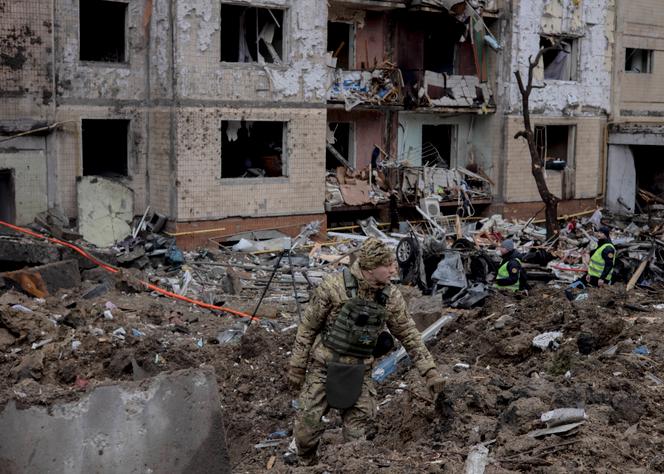


Moscow's winter maneuvers are well underway: After firing some 120 missiles at Ukraine on December 29, 2023 – its biggest salvo since the early days of the conflict that began 22 months ago – the Russian army repeated its wave of strikes on the night of Monday, January 1. That night, 99 missiles and 35 drones were launched at the cities of Kyiv and Kharkiv, according to the Ukrainian authorities. Russian forces reportedly used around 20 MiG-31 fighters and Tupolev Tu-95 and Tu-22 heavy bombers to carry out this attack, whose modus operandi was even more worrying for Ukraine than those launched during the previous winter.
The bombings targeted energy infrastructures – temporarily depriving some 260,000 people in the Kyiv region of electricity – as well as civilian buildings such as apartment blocks, shops and a church. At least five civilians were killed and 119 injured, according to the Ukrainian authorities. "Another attack by Russian savages," Ukrainian president Volodymyr Zelensky declared on Tuesday. In a short address broadcast on social media, he denounced a new campaign of "absolutely conscious terror," after the one Ukraine endured during the winter of 2022-2023, calculated "to cause as much damage as possible." According to him, in less than five days, since December 29, 2023, Russia has unleashed almost 300 missiles and more than 200 Shahed explosive drones against Ukraine.
Just over a year ago, Moscow launched its first waves of missiles and explosive drones against Ukrainian targets located far behind the front lines. For weeks on end, power plants and substations, district heating networks and telecommunications equipment were targeted – all aimed at depriving civilians of water, electricity and heating. A strategy which – although tantamount to a war crime – was expected to make the conflict unbearable for the Ukrainian people and break the country's unity, according to Russian President Vladimir Putin.
Yet not only had the Ukrainian power grid held out, but the country's air defense system was reinforced over several months, thanks to the delivery of Western systems such as the American Patriot, the Norwegian NASAMS (National Advanced Surface-to-Air Missile System), the German IRIS-T and the French-Italian SAMP/T. According to the Ukrainian army, 72 of the 99 Russian missiles that were fired on Monday night were shot down before reaching their target – a "remarkable" interception rate, according to a French military source. In particular, the 10 Kinzhal hypersonic missiles – the crown jewels of the Russian arsenal – launched during the attack were all destroyed in flight.
You have 60% of this article left to read. The rest is for subscribers only.
